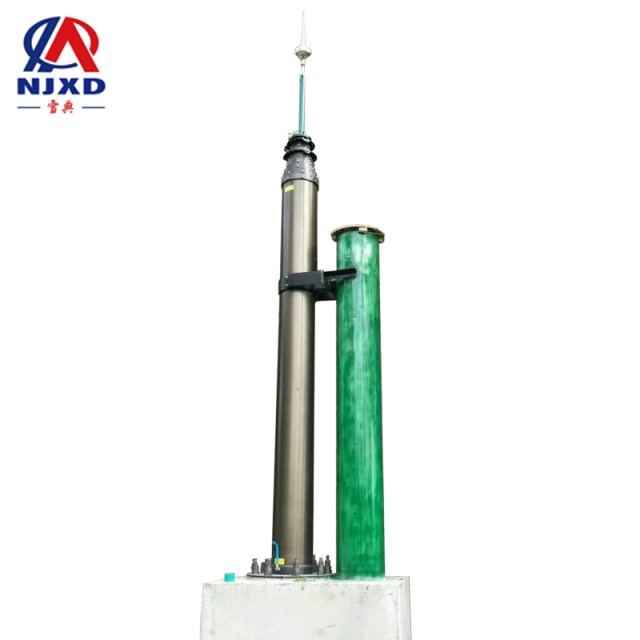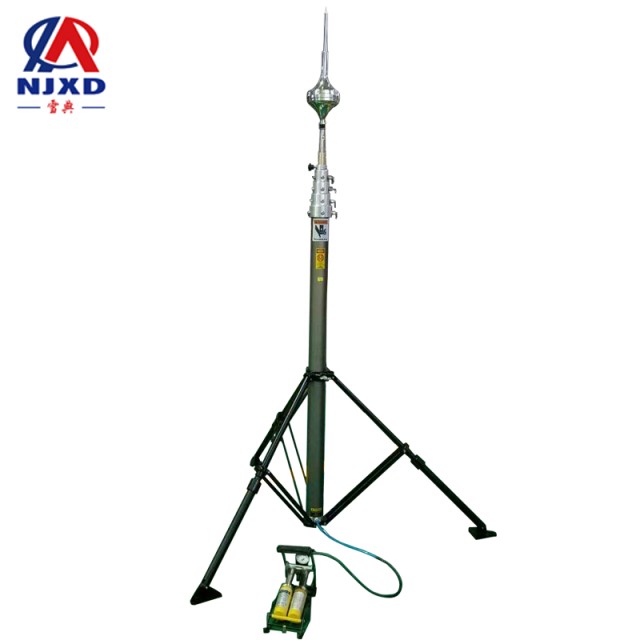NEWS
The development history of lifting ightning Rod
Time:2021-05-27 View:

Lightning Rod, also known as Lightning Protection Needle, lightning rod, is used to protect buildings, tall trees and other devices to avoid lightning strikes. Install a lightning receiver at the top of the preserver and connect the discharge ground screen buried in the ground with wires that meet the specifications. Ightning Rod specifications must comply with GB standards, and the ightning rod height specifications required for each lightning protection category are different.
When Lei Yun discharge approaches the ground, it makes the ground electric field distorted. At the top of ightning rod, a space of local electric field concentration is formed to affect the development direction of Lightning pilot discharge, guide lightning to discharge to ightning rod, and then introduce lightning current to the Earth through grounding down lead and grounding device, so as to protect protected objects from lightning strikes.
Allusions
Roasted hub
The book "roasted hub" in Tang Dynasty recorded such a thing: Bai Liang Hall was under fire during Han Dynasty. A Wizard suggested that a copper tile in the shape of fishtail should be placed on the top of the layer, it can prevent the Sky fire caused by lightning. The tile at the beginning of the fishtail set on the roof is actually used for lightning protection, which can be considered as the prototype of modern ightning rod. As early as before, China had already had ightning rod, usually decorated with a faucet, and the Dragon had ightning Rod heads in its mouth.
New things in China
In the book "new things in China" written by French traveler Cabrio de marganland in 1688, there is a raised faucet on both ends of the roof of China, and the dragon mouth spits a tortuous metal tongue and extends to the sky, the root of the tongue is connected with a thin wire, which leads directly to the underground. This wonderful device will show its power at the moment when lightning occurs. If lightning strikes the house, the current will move from the dragon tongue to the ground to avoid lightning destroying the building. This shows that the lightning protection devices on ancient Chinese buildings are basically similar to modern ightning rod in large quantities and structures.

Development history
Ightning Rod is the former name. In the national standard of the People's Republic of China GB50057-2010 "code for lightning protection design of buildings", this name has been abandoned and replaced by "connecting flash Rod '. Connecting flash Rod and connecting flash belt, connecting flash line, connecting flash net, metal roof used for connecting flash, metal components, etc., collectively referred to as lightning receiver; Lightning receiver and down lead, grounding devices together form external lightning protection devices of buildings or structures to avoid or reduce physical damage and personal casualties caused by lightning hitting buildings (structures) or nearby.
The reason why ightning Rod was renamed as flash rod is that the previous name was unscientific and did not reflect the principle of flash rod. When ightning Rod first appeared in China, people thought it could avoid lightning strikes on houses, so they called it ightning rod. But in fact, the way to lightning conductor protection a building is not to avoid lightning strikes on the House, but to draw thunder on the upper body, and then introduce lightning current into the underground through its down lead and grounding device, thus playing a role in protecting the building. It is for this reason that some people suggest changing the name of ightning rod to lightning rod, but in general, the name of connecting flash Rod is the most appropriate.
